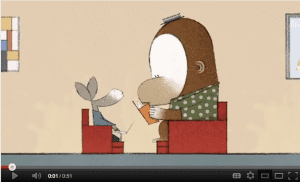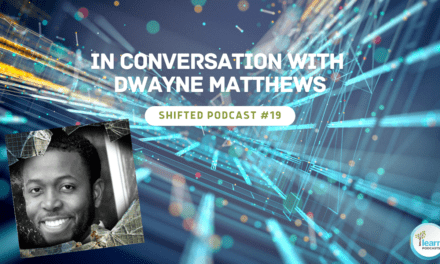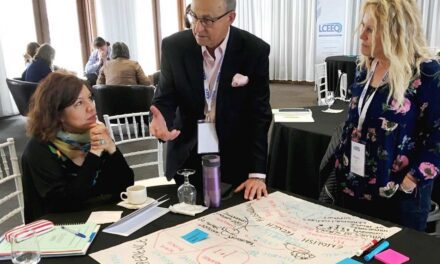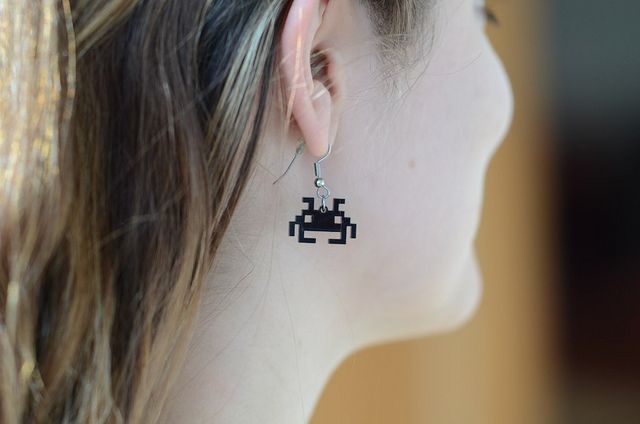by Melanie Stonebanks
You don’t have to have all the answers. You only need to know the questions to ask.
As has been discussed in the previous two postings on this topic, critical literacy is a way to use texts to help children better understand themselves, others, and the world around them. Using children’s literature, teachers can help their class through difficult situations, enable individual students to transcend their own challenges, and teach students to consider all viewpoints, respect differences, and become more self-aware.
There are many activities that are already going on in our classrooms that build critical literacy. Reading novels written from the point of view of a child from another culture or set in another country; sharing stories about families and their religious traditions or considering the lives of young people like them who lived through war, persecution or poverty; as well, when we ask our students to write from the point of view of someone else; all of these classroom experiences are ways of developing critical literacy. As Melissa Thibault (2004) reminds us, these activities all serve the same purpose: they help the student to see the world through someone else’s eyes, to learn to understand other people’s circumstances and perspectives and to empathize with them.
In order to properly prepare our students to be literate in this ever changing technological and multimodal world, we teachers need to reflect upon and challenge our own beliefs and understanding of literacy. Harwood (2008) advocates that “educators need to challenge children and provide balanced literacy opportunities that value the social-cultural construction of knowledge while reflecting the diversity of children’s lives.” She strongly supports the notion that classroom “opportunities to collaborate, discuss, critique, deconstruct, and reconstruct a multitude of meaningful and radical texts (Kohl, 1995) are equally important in literacy development as learning to identify phonemes of sound.”
For the sake of brevity, the definition of “radical texts” has been borrowed from Leland, Harste, Ociepka, Lewison, and Vasquez’s (1999) suggestions for choosing critical texts. Radical texts chosen for elementary aged children should meet the following criteria:
- Texts don’t make difference invisible, but rather explore what differences make a difference;
- Texts enrich children’s understanding of history and life by giving voice to those who have been traditionally silenced or marginalized;
- Texts show how people can begin to take action on important social issues;
- Texts should explore dominant systems of meaning that operate in our society to position people and groups of people;
- Texts should not provide “happily ever after” endings for complex social problems.
Children can be encouraged to think critically and answer critical questions that will enable them to examine their own insights as well as those presented in texts, which is at the heart of critical literacy programming. Teachers need to encourage children to challenge the status quo of what is represented within texts, asking questions such as:
- Whose voice is heard and whose voice is left out?”
- Who is the intended reader? (For example asking, is the text intended for specific groups of people and if so how is that group portrayed?)
- What was the world like when the text was created?
- What does the author want you to feel or think?
- What does the author expect you to know or value?
- What does the text say about boys (about girls)?
- Is it important that the main character is beautiful (powerful/wealthy)? (Harwood, 2008)
Luke, O’Brien, and Comber (2001) suggest the following key questions:
- What is the topic? How is it being presented? What themes and discourses are being expressed?
- Who is writing to whom? Whose positions are being expressed? Whose voices and positions are not being expressed?
- What is the text trying to do to you?
- What other ways are there of writing about the topic?
- What wasn’t said about the topic? Why?
This list is not exhaustive, and the critical questions that arise will often depend on the children and the issue involve. There is no single ‘recipe’ of how to incorporate critical literacy within an elementary school curriculum so teachers need to work against the “commodification” (Luke & Freebody, 1999) of critical literacy, as they begin to recognize the important benefits of fostering children’s critical viewing of texts. Harwood (2008) does well to remind us that children’s interests and questions should also be incorporated into the literacy curriculum and form an important addition to the critical questions that arise. By honouring children’s own natural curiosity and using their inquisitiveness as a starting point, greater depth and engagement with texts is possible.
A list of picture books to support critical literacy can be found here http://quest-critical-literacy.wikispaces.com/Picture+Books+to+Support+Critical+Literacy
A question that my husband and I always put to our pre-service education students when discussing the concept of curriculum design is the “So what?” or “Why?” question. We push these soon to be teachers to consider deeply the impact that their choices of what they will bring into their future classrooms will have on the children under their care. This is probably one of the most challenging exercises in lesson planning. Analyzing the overt and covert effect of one’s chosen methodology and material on a widely diverse group of learners is incredibly time consuming and at times frustrating if all aspects are considered thoroughly.
Now, not one to ask of others something I would not do myself, I end this posting with the questions “Why teach critical literacy? What difference will it really make in the lives of elementary students and teachers?” In all honesty, I believe the difference of enacting a program of critical literacy into one’s English Language Arts curriculum as compared to my own literacy learning as a student, student teacher and teacher is profound. As opposed to a basal textbook, scripted or worksheet driven reading program, a true emancipatory literacy curriculum which, in the words of Lankshear and Lawler (1987) is a literacy curriculum that enables students to become properly literate, a literacy of hope and possibility, of affirmation and acceptance; a literacy that challenges us to look beyond our limited cultural assumptions and worldviews; a literacy that not only legitimates students’ voices but allows them to see that they are part of the continuing human dialogue, and that their lives can make a difference is what needs to be put in place. Without a doubt, it will take a great many more hours to develop and there will be numerous mishaps along the way but the empowerment and sense of self that will be fostered in that community of learners is well worth it.
The following sites are good places to continue reading, thinking and teaching about critical literacy in your classroom. Enjoy!
http://resources.curriculum.org/secretariat/november29.shtml
http://sites.google.com/site/criticalliteracyeduc5765/home
http://www.squidoo.com/the-ugly-duckling
http://www.edu.gov.on.ca/eng/literacynumeracy/inspire/research/Critical_Literacy.pdf
http://www.readwritethink.org/classroom-resources/lesson-plans/wolf-analyzing-point-view-23.html
http://www.lessonplanet.com/search?keywords=critical+literacy&media=lesson
References for further reading can be found here:
Harwood, D. Deconstructing and Reconstructing Cinderella: Theoretical Defense of Critical Literacy for Young Children. Language and Literacy, volume 10, issue 2, Fall 2008. Retrieved from http://www.langandlit.ualberta.ca/Fall2008/Harwood.htm
Kohl, H. (1995). Should we burn Babar? Essays on children’s literature and the power of stories. New York: The New Press.
Lankshear, C. & Lawler, M. (1987). Literacy, schooling, and revolution. New York: Falmer.
Lelande, C., Harste, J., Ociepka, A., Lewison, M., & Vazquez, V. (1999). Exploring critical literacy: You can hear a pin drop. Language Arts, 77(1), 70-77.
Luke, A., & Freebody, P. (1999). A map of possible practices: Further notes on the four resources model. Practically Primary, 4(2), 3-8.
Luke, A., O’Brien, J., & Comber, B. (2001). Making community texts objects of study.
In H. Fehring & P. Green (Eds.), Critical literacy: A collection of articles from the
Australian Educators’ Association. Newark, NJ: International Reading Association.
Thibault, M. Children’s literature promotes understanding. LEARN North Carolina, 2004. Retrieved from http://www.learnnc.org/articles/article?id=maples0601






Critical literacy was a new idea for me; I was never introduced to it as a young reader. Having not seen this concept within my classes, I am now slowly exploring the idea and trying to figure out how to incorporate within my class room. These posting, especially this one, help me a great deal in figuring that out. As I am developing as a teacher, this was one area I was worried about, I didn’t quite know what critical literacy was, or what books would address it within an elementary class room. This posting help a great deal with those questions, I now know exactly what it is and how it “helps their class through difficult situations, enable individual students to transcend their own challenges, and teach students to consider all viewpoints, respect differences, and become more self-aware.” However, being someone, who was not quite sure of what it was, I was not sure how to and what books to bring into my class to support critical literacy. Within the posting, a book list was included (found at http://quest-critical-literacy.wikispaces.com/Picture+Books+to+Support+Critical+Literacy) which I found that to be very helpful and will help me a great deal to incorporate critical literacy in my future class rooms.
This article really brings forth the connection that critical literacy has to multicultural education. In particular, the list of radical texts allows a teacher to choose literature that will get to the root of multiculturalism rather than just teaching the superficial content of the concept. I think this is very important because literature that follows this specific criteria will allow students to challenge societal beliefs and customs while exposing them to other viewpoints and cultures.
Well, I can only but agree with you. Critical thinking in literacy?… I don’t recall much of it in elementary either. And even though I had a very culturaly mixed class the inclusion of diffrent point of views in the readings or different traditions were not explored. I am not developping as a teacher and doing all I can to make my classroom a fun place to learn. I know this includes the critical thinking aspect and it is crucial that through the activities I do with my students I promote it. In the books I choose -THEY CHOOSE- as well. These three postings are a great tool to make me think of the meaning of it and its importance. “Dick and Jane” book did definitely not do the job at helping the students in being critical literally. It’s seeing the world i someone else’s eyes based on what they live and experience in theirs. As you said: “In order to properly prepare our students to be literate in this ever changing technological and multimodal world, we teachers need to reflect upon and challenge our own beliefs and understanding of literacy.” We all know, somewhere inside, we have to do it and challenge ourselves to think outside the box. And mostly we have to keep in mind how important our impact on the children is, how we can change the students’ lives by giving them this outsider point of view so they can learn through it!They are so very curious about the world around them and as a teacher you definitely don’t want them to lose that need to learn and discover! Thus, helping them being critical about literacy at a young age is a perfect way to promote reading in the older year and especially a perfect way for them to enjoy it!
I agree with what you said. I’ve never heard of the term critical literacy so it’s quite new to me. I never seen it in elementary school since reading was never one of my hobbies. Growing up, i loved looking at picture books, but slowly started to dislike reading when i had to read books that I did not like. After reading a book, we would always look at literacy elements. It got repetitive because we were always looking for characters, setting, conflicts, climax and so on. I found it boring an hard to understand and worried because my answers might not be the right. I believe it is important to provide a variety of text and activities in the classroom to help guide students to think critically. So I really like your suggestions of questions that can be asked after reading texts. It allows for their opinions and views so they can connect themselves and the text they read. As teachers, we need to first think about our opinions on critical literacy and what we understand before incorporating it in our classroom to help our students to learn to critically think.
Reading this article, it is evident that critical literacy is very important in the elementary classroom. Elementary school is a time where children are beginning to learn about and discover the world around them. During these early years, it is crucial that children develop as open minded individuals who are accepting of different world views. Bringing critical literacy into the classroom allows books to be used as a means to educate children not only about literacy and language, but about different cultures, different word views and about themselves. Critical literacy allows children to be able to relate to the book, as many of these books use children as characters and portray children in a way that makes students feel comfortable. Although critical literacy is something quite new to me, it is something I am really interested in discovering more about.
I think the word critical and elementary really had me worried in the beginning as to how those two terms could work among each other but you gave some great ideas in how to incorporate them as a teacher. I think critical literacy is something some teacher’s don’t know how to go about safely and I thought so myself thinking how could you work with religion or culture in a class without offending or being bias. Beyond that, I know how important it is to bring that into a classroom and as a teacher our role is to push aside not only our concerns, but our students concerns, so that it becomes an environment where we can learn from one another and not be afraid to discuss it. One of the things that I found interesting was the guidelines for the radical texts because it says happy ever afters should not be necessarily enforced in the literature, however I know that there are books out there banned from schools because parents did not like the fact that there was no happy ever after. So I think we can do so much on our own as a teacher to feel good about how we bring forth critical literacy but how to we work among a network of all parents without having issues like such? As a developing teacher, that is what I would like to know,but your blog surely does make it easier to see what critical literacy can do.
The idea of educating elementary school students about critical thinking is new to me. Personally I only learned how to do so in my Cegep years therefore the idea of teaching 8 year old this skill seemed a little far-fetched to me. Now, after reading a few articles regarding the idea I recognize the importance it has for young developing children. Now that I look back at my past literacy activities I remember them being repetitive and based entirely around finding the plot, setting, climax and other specific aspects of the book. I can remember being bothered with the idea that I would not have the correct answer but by teaching students to think critically this stress is reduced. By asking students particular questions about their readings they can think beyond the character, plot and other redundant aspects of the book. I now see that ultimately, by focusing on the function of literature, or advertisement for that matter, this will better enhance students’ knowledge of the world around them as well.
You raise some great points about how and why we need to engage students in critical literacy. As the elementary years are a formative time, I understand why it is so important to engage students from a young age with critical literacy. By showing them through text that not everybody is like them and that there are many different views on a given topic it can “help children better understand themselves, others, and the world around them”. Through the questions that you mention above, I hope to be able to look at literacy more critically and bring these questions to my future classroom in order begin my students on the road to looking at literacy with a critical eye.
I find this article to be incredibly thought-provoking and relevant in our increasingly dynamic and diverse world of literacy. I’m going to take this opportunity to embrace your introductory quote: “You don’t have to have all the answers. You only need to know the questions to ask.” The questions you propose for us to ask as teachers focus on challenging the status quo and the inequality of power relations found in literature. I think that these active and reflective critical literacy skills are incredibly important for the development of socially conscious citizens and self-aware learners, but I wonder if there is a point when all of these questions could smother the joy that students may be experiencing when they jump into a novel or explore an illustrated picture book. How do we balance the Oh-So-Important joy students must experience on their journey to becoming life-long readers with the need for students to be critical participants in their own lives? I do think we can encourage joy through critical literacy by encouraging and building off of student questions and natural discussion points. As you say, “By honouring children’s own natural curiosity and using their inquisitiveness as a starting point, greater depth and engagement with texts is possible.” But, what happens when the children do not ask the really pointed questions? Will our insistence that they examine their favourite stories for inequalities stifle their love of reading? As you mentioned in an earlier thread, you loved reading C.S. Lewis books as a child, but were appalled to later discover the anti-Islamic nature of his books. I assume you wish you had either never read them or would have had a critical discussions about the groups portrayed following the reading. I wonder how this would have changed your view of reading? Interestingly, my elementary school teacher was very vocal about her criticism of C.S. Lewis books and so I did not read the Chronicles of Narnia series until recently when I was helping my niece with a school project. This experience made me wonder if these traditional literature books should not be offered in class and whether this should be a teacher’s personal choice or a matter of actually banning questionable books, which seems overly Big Brotherish and difficult to monitor. On the other hand, having students develop the skills to critically engage with the material and providing them with meaningful and radical texts, as you describe, seem like much more constructive and positive approaches. I appreciate the emphasis you place on both student-led and teacher-directed questions and I think that somewhere in there can be found the balance between joyful escapism and critical literacy.
Of all the questions listed, my favourites include: “whose voice is heard and whose voice is left out?” “what other ways are there of writing about the topic?” and “what wasn’t said about the topic? why?” Before returning to university I spent a decade working in advertising. I can honestly say that every word, every image and every message is VERY intentional. Groups of people sit for hours, huddled in a room, over weekends and holidays, figuring out how to “speak” to certain people and how to leave certain people out. It’s a science. It’s intentional. It’s almost (ok, it is) immoral. Thank you for all the amazing resources. What a great end to this series of posts!